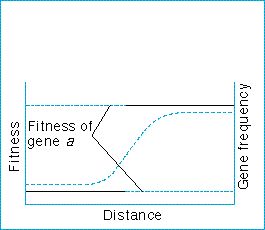Speciation - What is the role of hybrid zones in speciation?

Will reinforcement operate in a hybrid zone?
If the hybrids are not selected against, reinforcement will not operate in a hybrid zone, and the hybrid zone could be stable indefinitely.
However, if the hybrids are disadvantageous, natural selection will act to reinforce the reproductive isolation between the two forms. If reinforcement is effective, two full species can evolve.
The full process of parapatric speciation, therefore, is for a cline first to evolve, without any allopatric phase, as far as a hybrid zone, in which the hybrids are selected against, and then the two different forms are selected to mate only with others of their own type.
The difficulty with reinforcement is that it has to occur in a limited time. If there are two populations, containing genotypes that when crossed produce inferior hybrids, reproductive isolation is only favored while the populations remain distinct; but if they are not yet isolated, natural selection will either eliminate one of the genes or gene flow will merge the two populations.
In the theory of parapatric speciation, this problem is solved by the stable cline. A cline like that in the figure will be maintained indefinitely by natural selection: a different form is favored along the environmental gradient and reinforcement has a much longer time to operate. The stable cline is an essential feature of parapatric speciation; without it, there would probably not be enough time for reinforcement.
So the theoretical possibility of reinforcement exists: but what evidence is there for it in modern hybrid zones?
Figure: a stable cline can arise when natural selection favors different genotypes in different discrete environments and there is gene flow (migration) between them.
| Next |



